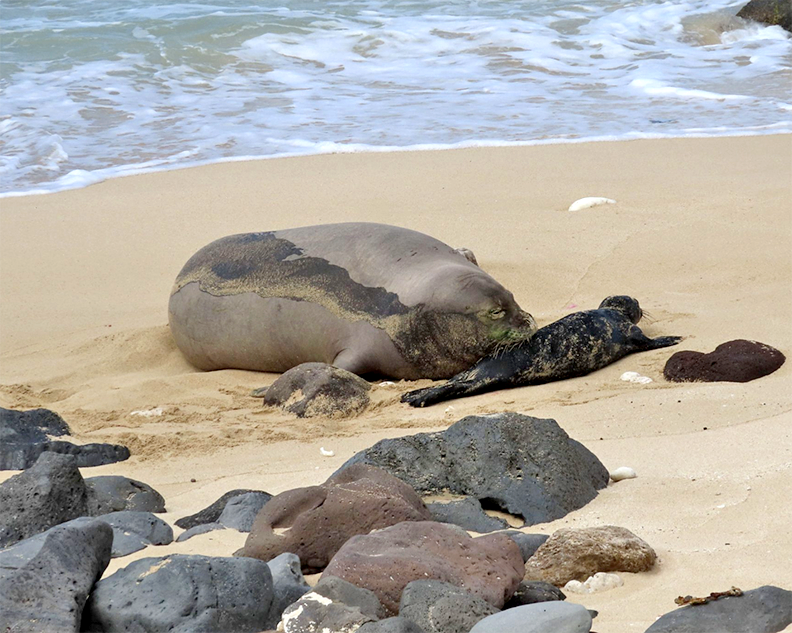By Ruby Pap
Warning! If you easily get queasy around all matters feet, skip this paragraph. I recently had a pedicure on the Mainland that went way wrong. After a few days of wearing open-toed sandals in foggy San Francisco, the pain wore off … but come back to the islands, walk through a polluted stream to get to my favorite surf break, and say hello to an infection!
My doc told me my toe is the victim of Staphylococcus or Streptococcus bacteria. Since I don’t really know for sure where or how I got the infection, I focused on the learning opportunities: (a) how to soak a toe in a shot glass full of peroxide; (b) bacterial water quality data and trends; and (c) what can be done to stay healthy.
I called Dr. Carl Berg of the Surfrider Foundation to get some guidance. The Hawai‘i Department of Health samples the waters off of Kaua‘i’s main beaches http://emdweb.doh.hawaii.gov/CleanWaterBranch/WaterQualityData/default.aspx and the Surfrider Foundation’s Blue Ribbon Task Force samples additional locations, including streams http://kauai.surfrider.org/what-we-do/blue-water-task-force/.
Water samples are taken on a weekly and monthly basis and tested for Enterococcus, an indicator of fecal contamination. The bacteria are cultured and counted in a 100mL sample and compared to standards that are considered “safe” for human recreation. A single sample must not exceed 104 bacteria per 100mL. The geometric mean of five samples (taken over time) must not exceed 35 per 100mL.
Polluted runoff makes its way from the land, through streams, and to the ocean. The source can be from human (e.g. leaky cesspools) or animal waste.
It is very important to note that just because one sample has a high bacteria count, doesn’t mean that water is polluted all the time. The sample could have been collected after a heavy rain. Avoid recreating in waters after a heavy rain, typically what we see as “brown water” days. DOH posts brown water advisories at: http://emdweb.doh.hawaii.gov/cwb/wqd/viewer/. Sometimes the advisory doesn’t get on the web quick enough, though. Surfrider is advocating that DOH post signs at beaches and waterways when they are considered unsafe.
Most of the time, our waters are clean. However, the geometric mean numbers show those waters (mostly streams) that are polluted all the time: Waikomo Stream at Koloa Landing, Nawiliwili Stream in Kalapaki Bay, Hanama‘ulu Stream, and Niumalu Beach Park near Puali Stream, Huleia River, Pakalas surf break, and Hanalei River mouth. Koloa Landing, for example, currently has a geometric mean enterococcus count of 1844.6 for the year 2014!
Common health impacts include bacterial and viral infections, ear, nose, throat, and open wound infections. Don’t play in polluted water. If you do go in the water, rinse off really well as soon as you get out, concentrating on the openings to your body (eyes, nose, throat, cuts, etc.).
If you are an unlucky one with an infection, don’t panic – just see your doctor. Oh, and email me if you need more details on the shot glass technique.
- Ruby Pap is a Coastal Land Use Extension Agent at University of Hawai‘i Sea Grant College Program. She can be reached at rpap@hawaii.edu.
Discover more from ForKauaiOnline
Subscribe to get the latest posts sent to your email.






Leave a Reply